#zojo-ji temple
Text

Tokyo Tower and Zojo-ji Temple. @visitjapan-blog @visittokyo-blog
#original photography#photographer on tumblr#pws photos worth seeing#tokyo tower#zojo-ji temple#temples of japan#low angle view#tokyo#japan#cityscape#city view#temple#travel#photography
44 notes
·
View notes
Text

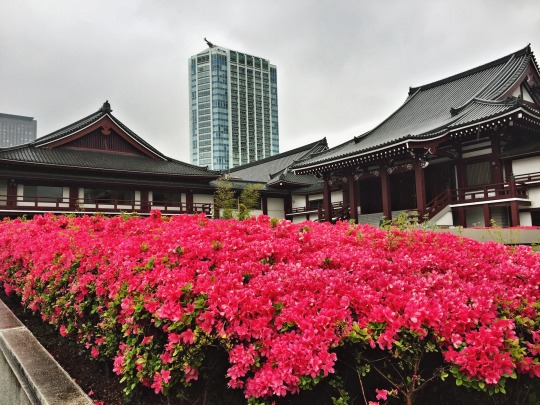
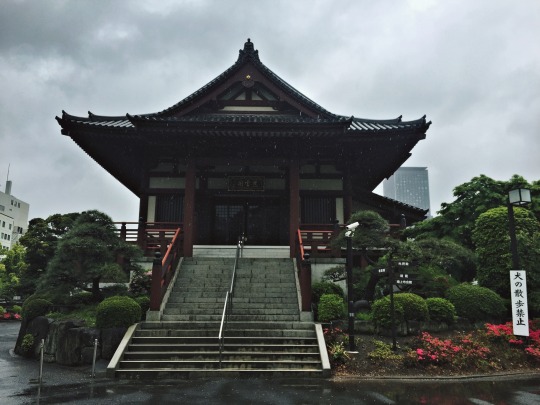
Stunning Temples & Shrines 🏯
#Zojoji Temple#Tokyo Tower#Zojo-ji#Flowers#Cloudysky#Shibakoen#Raining#Minato#Rainy#Tokyo#Rain#Japan
14 notes
·
View notes
Video
Shiba Daimon at Night por Rekishi no Tabi
Por Flickr:
This is the rebuilt outer gate that leads to Zōjō-ji in Shiba, Tokyo. Zōjō-ji is affiliated with the Jodo sect of Buddhism, which was founded by Honen Shonin in 1175. Zōjō-ji was built in 1393, but Tokugawa Ieyasu moved it to its current site in the Shiba are of Minato-ku in 1598 as he began to build up the city of Edo—which was what Tokyo was called until 1868. Zojo-ji became the patron temple of the Tokugawa and the final resting place for many of the shoguns—hence the temple and its gates are decorated with the hollyhock family crest of the Tokugawa clan.
10 notes
·
View notes
Photo
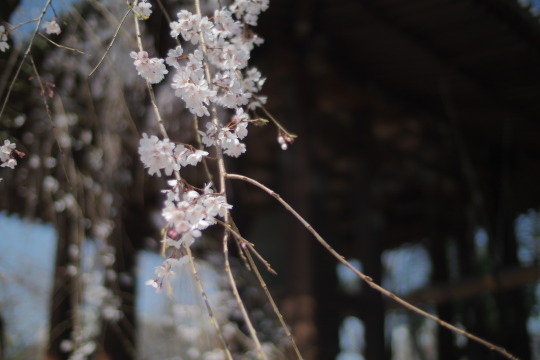
1 note
·
View note
Photo

Zojo-ji Temple in Snow, 1933
Tsuchiya Kōitsu (1870-1949)
Hamamatsu, Shizuoka, Japan
668 notes
·
View notes
Text

Model of the Taitokuin Mausoleum 1909-10
Wood, lacquer, copper alloy, painted and partially gilded
The model is an accurate one-tenth scale facsimile of the Taitokuin Mausoleum, dedicated to the second Tokugawa shogun, Hidetada, who died in 1632. The Mausoleum was constructed shortly after his death at the Tokugawa family temple of Zojo-ji in Edo (now Tokyo). It was made by the leading architects, builders, sculptors and artists of the day and served as the prototype for the rebuilding of the Nikko Toshogu in 1634-36. The Mausoleum was destroyed in the war-time bombing of Tokyo in May 1945.
The model was commissioned by the City of Tokyo for display at the Japan-British Exhibition at White City, London, from May to October 1910, at which millions of Londoners gained their first experience of Japanese culture. It was made while the actual Mausoleum still stood, and was based on precise measurements and study of its architecture and decoration. As it is very large, the model was made with many of the same materials and techniques of the original, including timber frame joinery by temple carpenters, maki-e (gold and silver lacquerwork) metal work and polychromy.
Royal Collection Trust
14 notes
·
View notes
Photo
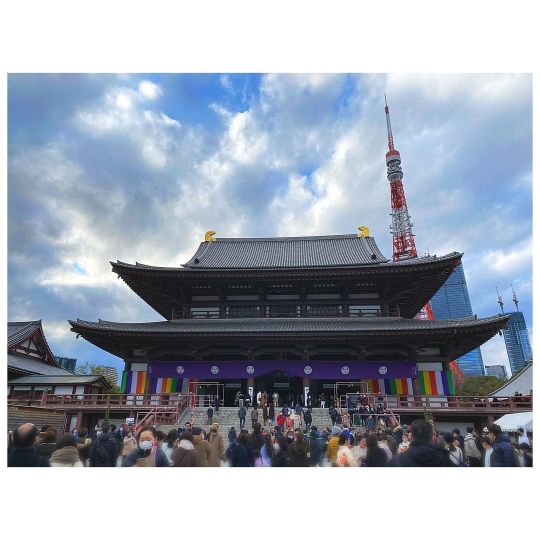
Zojo-ji in Tokyo. The view of this lovely temple with Tokyo Tower right behind it is stunning. Also, it’s main gate is one of the oldest wooden buildings in Japan. It was built in 1622. #japantravel #tokyotravel #japanesetemple #zojoji #東京観光 #増上寺 #御朱印 (at 増上寺) https://www.instagram.com/p/CnGgmFJvf7d/?igshid=NGJjMDIxMWI=
2 notes
·
View notes
Text
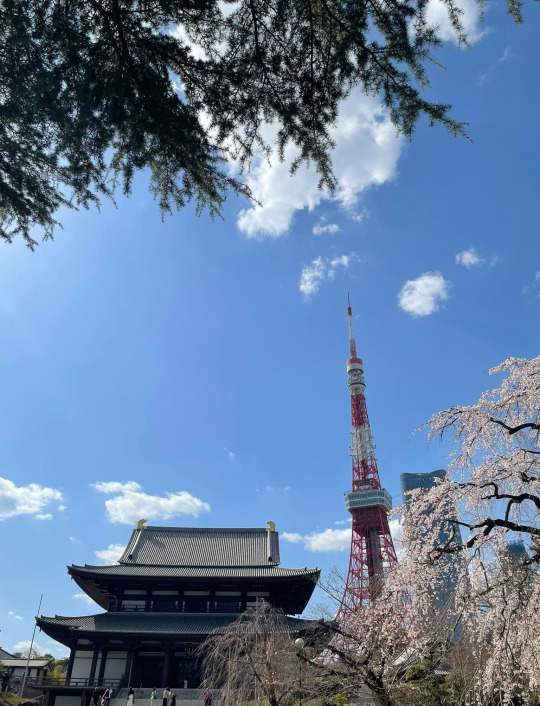
zojo-ji temple and tokyo tower 🌸 2023
1 note
·
View note
Photo
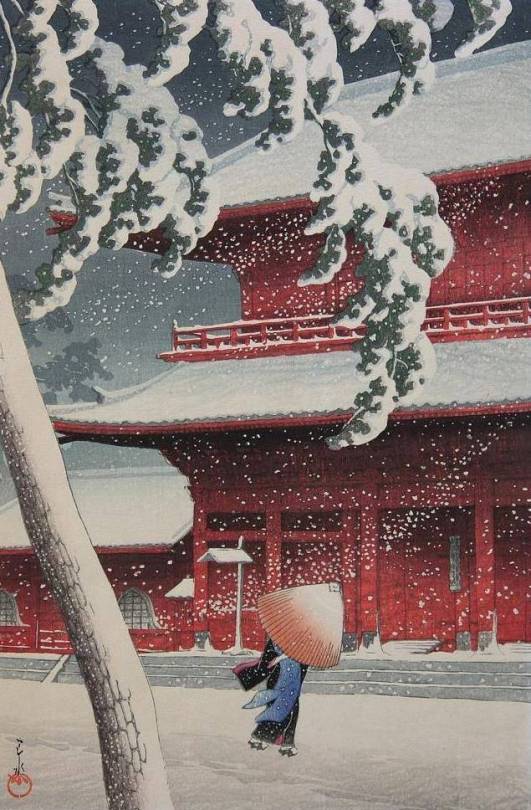
Hasui Kawase - Snowfall at the Shiba Zojo-ji Buddhist Temple, 1925
1 note
·
View note
Photo
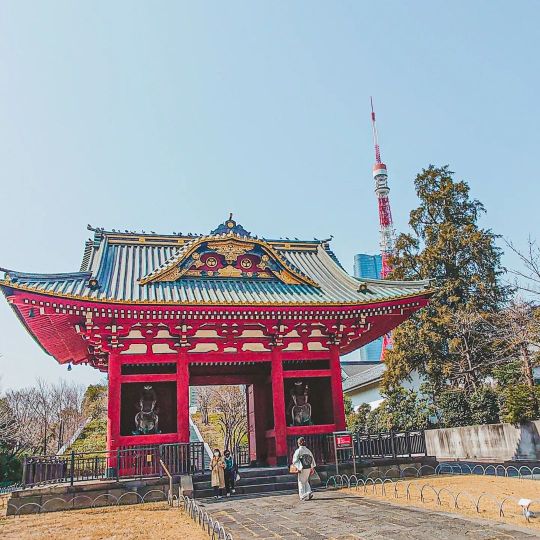
Yesterday we took a walk from Azabujuban shopping street to Shiba park and Zojoji. The very first day not wearing a coat! The virtual walk is on my YouTube channel (link in stories). I started these walks because I want to show my family back home the places I see - and I love Tokyo too much! The building was the main gate of the mausoleum of Hidetada Tokugawa, the second shogun of the Edo Shogunate, and is an important cultural property. The mausoleum was built on the south side of the precincts of Zojo-ji Temple in 1788, the year Hidetada died. It was the largest of the Tokugawa family mausoleums, but most of it was destroyed in the WWII raids. 🚇 Closer stations: Shibakoen (Mita line) and Akabanebashi (Oedo line). #shibakoen #shibapark #tokyotower #tokyotowerview #japaneseculture #japantourism #japanesecultureexperience #japanesehistory #japanesehistoryandculture #japanesehistoricalplace #zojoji #zojojitemple #東京タワー #東京タワー景色 #芝公園 #増上寺 #増上寺と東京タワー #virtualtravel #virtualwalk #virtualwalkthrough (presso Shiba Koen) https://www.instagram.com/p/CpsO4BiPsvy/?igshid=NGJjMDIxMWI=
#shibakoen#shibapark#tokyotower#tokyotowerview#japaneseculture#japantourism#japanesecultureexperience#japanesehistory#japanesehistoryandculture#japanesehistoricalplace#zojoji#zojojitemple#東京タワー#東京タワー景色#芝公園#増上寺#増上寺と東京タワー#virtualtravel#virtualwalk#virtualwalkthrough
0 notes
Text

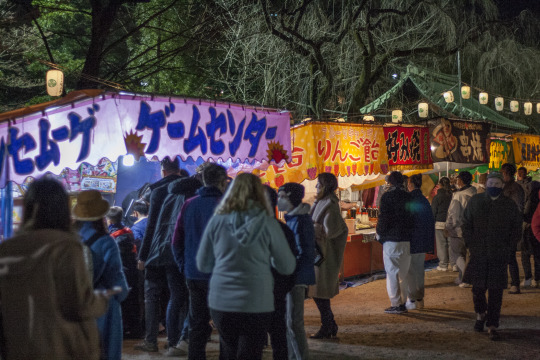
Food stands at Zojo-ji Temple (増上寺) in Tokyo, New Year's Eve.
0 notes
Text
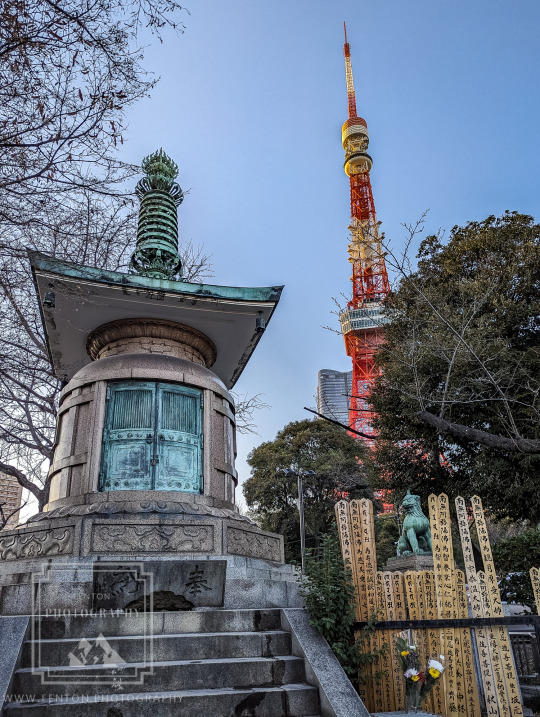
Looking up at the Tokyo Tower from the Zojo-ji temple. @visittokyo-blog
#original photography#photographer on tumblr#pws photos worth seeing#trees#blue sky#tokyo tower#zojo-ji temple#low angle view#landmark#exterior#city view#cityscape#tokyo#japan#temples of japan
7 notes
·
View notes
Text
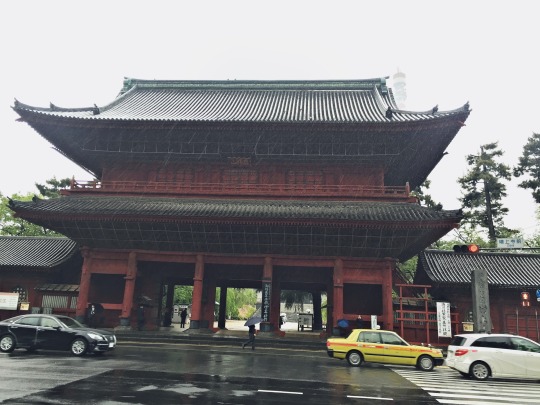
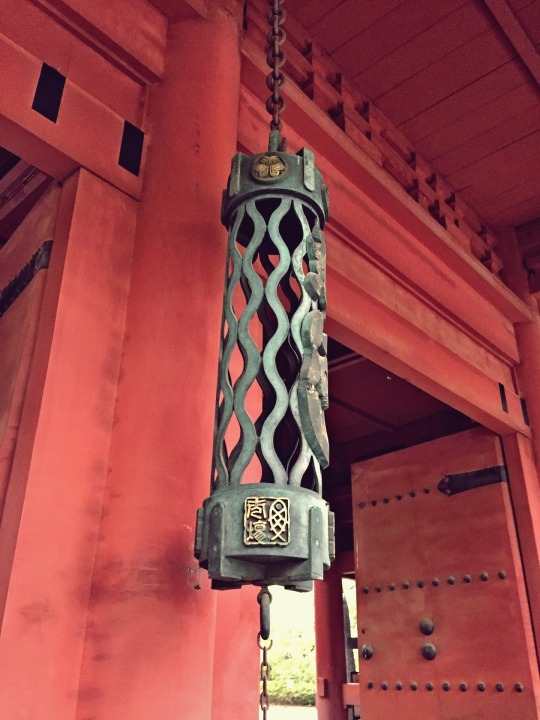
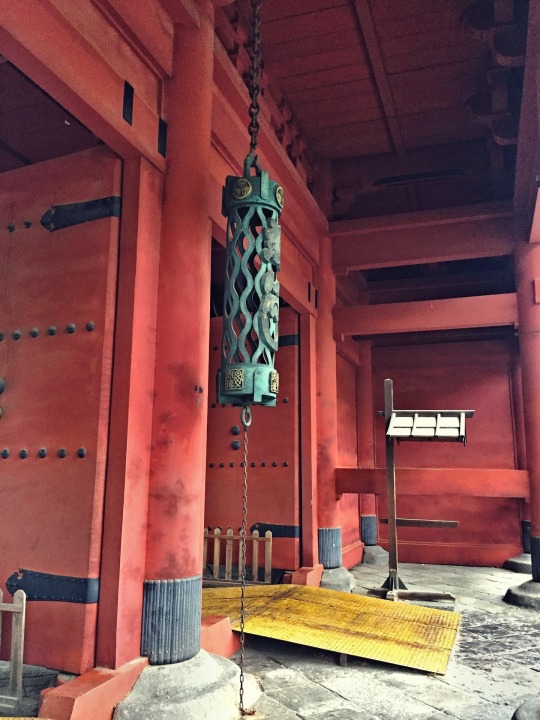

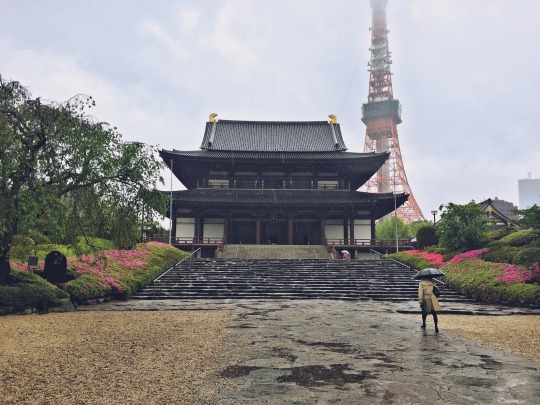
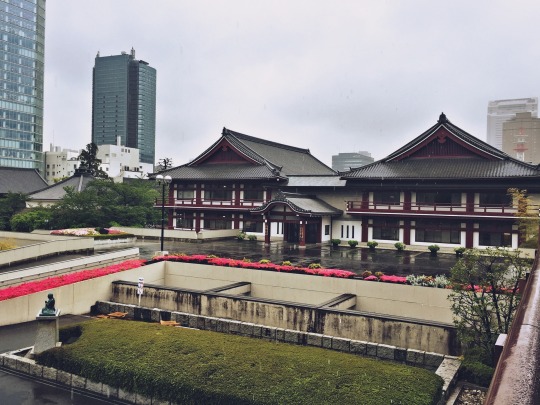
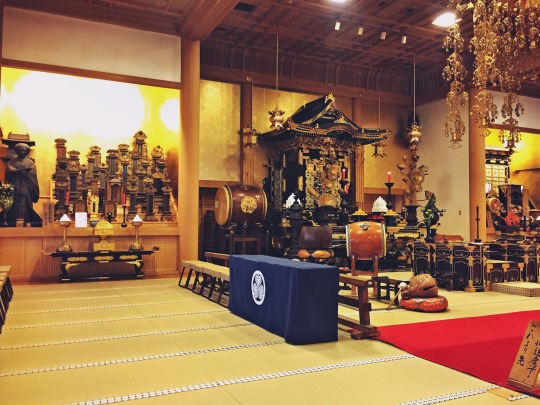

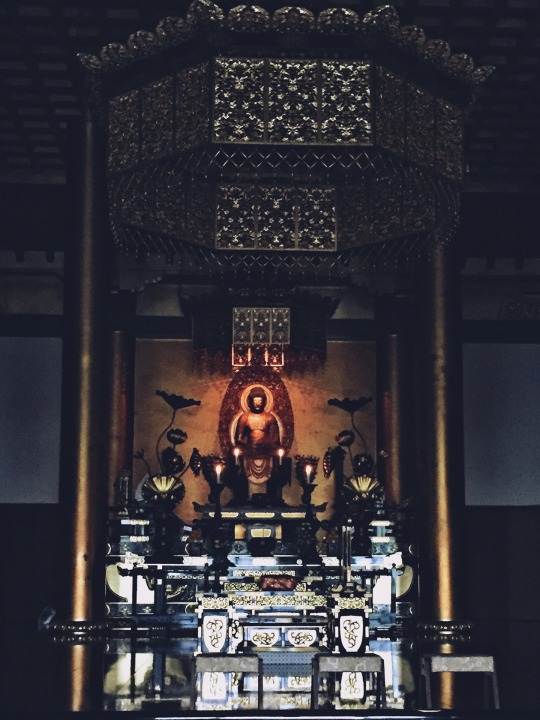
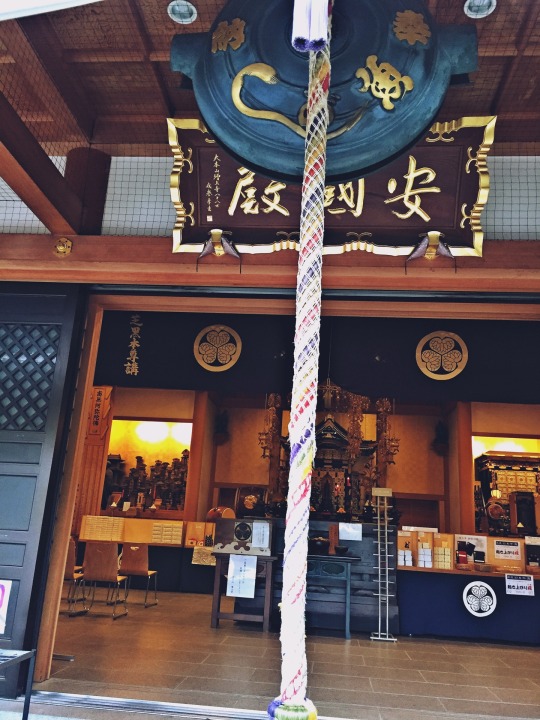
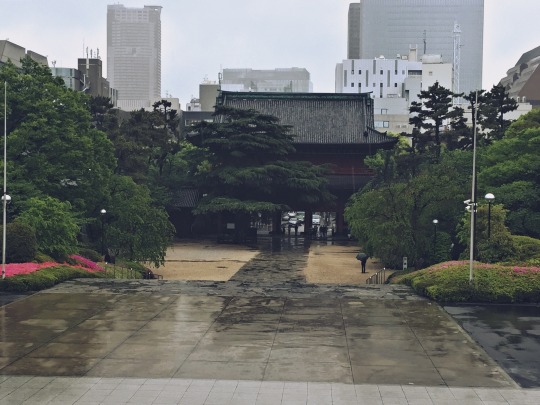
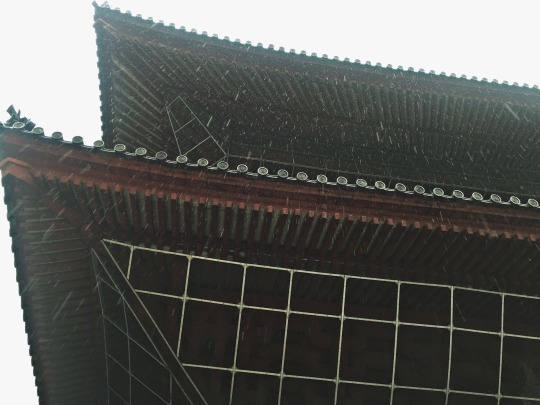
Zōjōji Temple 🏯 The Oldest Wooden Structure in Tokyo🗼
#Zojoji Temple#Sangedatsumon#Cloudysky#Flowers#Zojo-ji#Shibakoen#Raining#Minato#Rainy#Tokyo#Tokyo Tower#Rain#Japan
10 notes
·
View notes
Video
Sunburst and Tokugawa Tomb Gate por Rekishi no Tabi
Por Flickr:
Taken at Zōjō-ji. Behind this door, are the graves of 6 of the 15 Tokugawa shoguns who ruled from 1603-1868, as well as wives, concubines, and daughters. Notable shogunal wives buried here are the imperial princess Kazunomiya, who was married to the 14th shogun, Iemochi, and Gō, the wife of the second shogun, Hidetada. Zōjō-ji is affiliated with the Jōdo sect of Buddhism, which was founded by Hōnen in 1175. Zōjō-ji was built in 1393, but Tokugawa Ieyasu moved it to its current site in the Shiba are of Minato-ku in 1598 as he began to build up the city of Edo—which was what Tokyo was called until 1868. Zōjō-ji became the patron temple of the Tokugawa and the final resting place for many of the shoguns—hence the temple and its gates are decorated with the hollyhock family crest of the Tokugawa clan.
#Zojo-ji#Zojo-ji Temple#Tokugawa Family Temple#Tokugawa Shogunate#Tokugawa Clan#Tokugawa Shogunal Tombs#Tokyo#Minato-ku#Japanese Buddhist Temples#Japan
2 notes
·
View notes
Photo


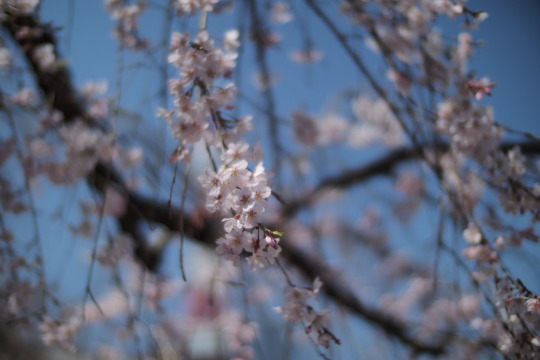

1 note
·
View note
Text
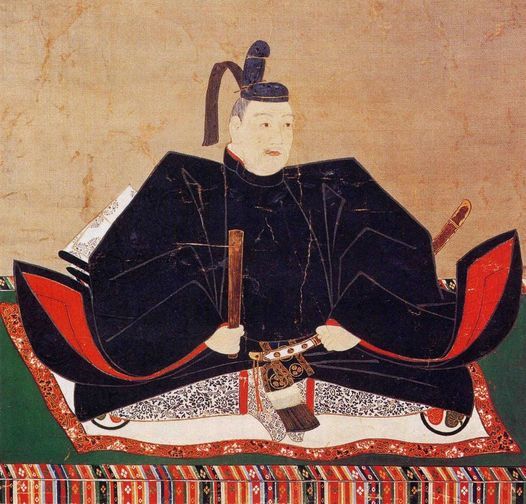
Shogun Tokugawa Hidetada, died on this day, March 14, 1632
Tokugawa Hidetada was born the third son of Tokugawa Ieyasu, on May 2, 1579. Shortly after his birth, Ieyasu’s first son and wife were executed having been accused of plotting to assassinate Oda Nobunaga. Ieyasu’s second son had been adopted as an infant by Toyotomi Hideyoshi, a Machiavellian way of ensuring peace between the two clans, making Hidetada his remaining heir.
Hidetada’s mother died of a sudden illness in 1589 when he was ten, and so he was raised by one of Ieyasu’s concubines, Achaa no Tsubone. The following year, the 11-year-old Hidetada was sent as a hostage to Toyotomi Hideyoshi during the attack on the Hojo clan in the Siege of Odawara. The Tokugawa and the Hojo had once been on friendly terms, and in an effort to maintain his “loyalty”, Hideyoshi had taken the young Hidetada, as well as offering his father the eight Kanto Provinces, including Edo.
During his time as hostage, Toyotomi Hideyoshi held the boy’s Genpuku, or Coming Of Age ceremony. Hidetada also married while being held hostage. The first time was in 1590 to Oda Nobukatsu’s daughter, O-Hime, who had been adopted by Hideyoshi. However, O-hime died a year later. Hidetada was freed in 1593, and rejoined Ieyasu in Edo.
At Fushimi Castle in 1595, Hidetada would marry Oeyo, a daughter of Azai Nagamasa who had also been adopted by Hideyoshi. Together, they had four children, Tokugawa Iemitsu, Tadanaga, and two girls Senhime and Kazuko.
In 1600, just prior to the Battle of Sekigahara, Ieyasu ordered his son and an army of around 30,000 to attack the Uesugi in the northern districts, and then to take the Nakasendo route to Sekigahara. En route, Hidetada laid siege to Ueda Castle, held by the Sanada clan. For the second time, the Sanada repelled the invading Tokugawa forces, and by the time Hidetada disengaged, and made his way to Sekigahara, he was too late. The battle had ended two days before he and his army arrived. Ieyasu was furious with his son, and refused to greet him, further straining relations between them.
Ieyasu was made Shogun in 1603, and retired in 1605, making Hidetada the second Tokugawa Shogun, however, Ieyasu retained significant political control until his death in 1616.
In 1612, Hidetada organized the marriage of his daughter, Ieyasu’s favorite granddaughter, Senhime to Toyotomi Hideyoshi’s son, Hideyori, much to Ieyasu’s chagrin. The Tokugawa would soon make moves to completely destroy the rival Toyotomi, attacking Osaka and forcing the deaths of Hideyori and his mother. Only Senhime was rescued. She would later marry into the Tokugawa-loyal Honda clan. Hidetada’s other daughter, Kazuko, would be married to the Emperor Go-Mizunoo. Their daughter would become Empress Meisho.
Hidetada retired from the office of Shogun in 1623 in favor of his son, Iemitsu, and passed away 9 years later in 1632. His remains were buried in a specially built mausoleum, the Taitoku-in, within the Tokugawa burial grounds at Zojo-ji Temple in Edo.
10 notes
·
View notes
